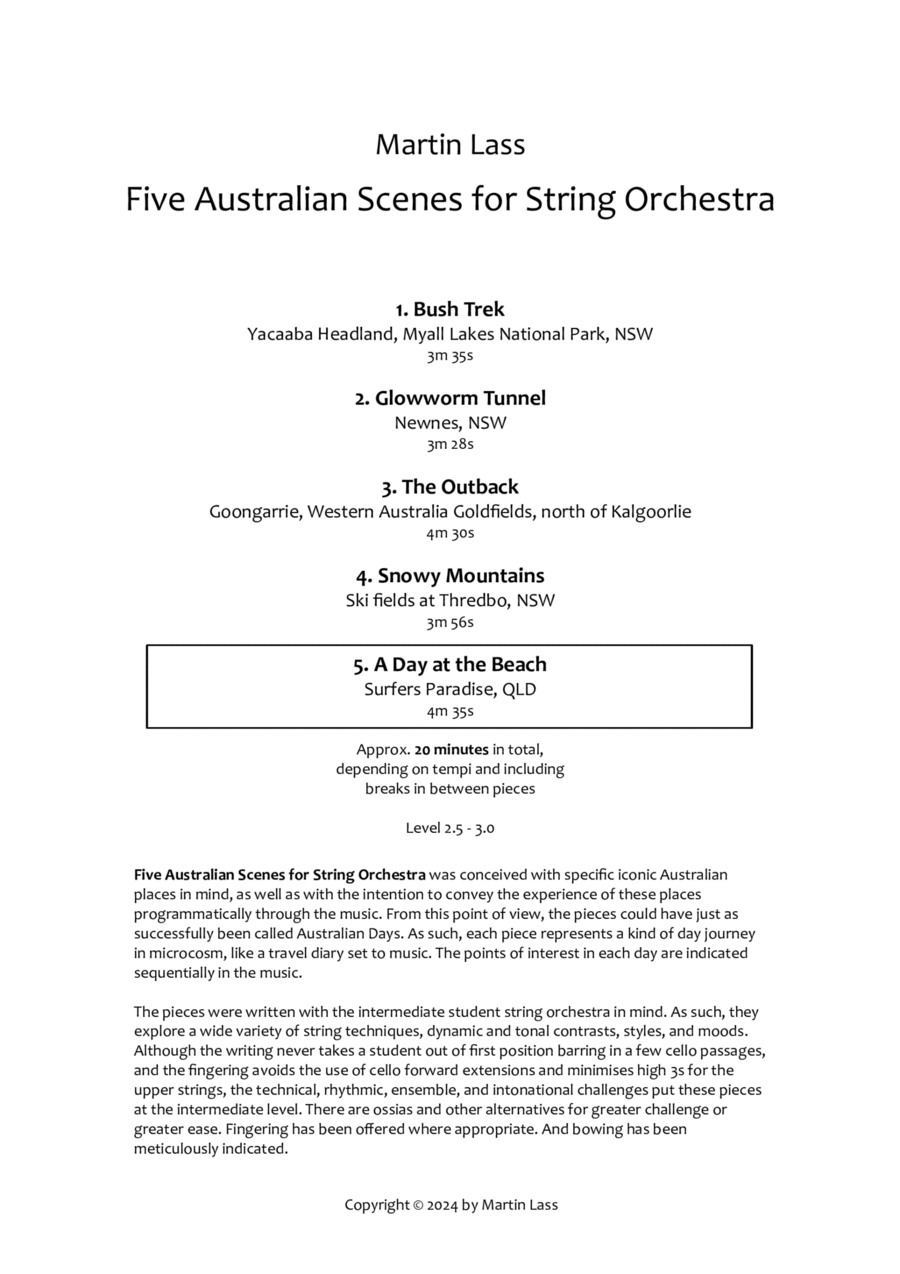String Orchestra - Level 3 - Digital Download SKU: A0.1414027 Composed by Martin Lass. Chamber,Children,Classical,Instructional. 43 pages. MA Lass & I Lass #995794. Published by MA Lass & I Lass (A0.1414027). Martin Lass is an Australian violinist, composer, arranger, and teacher. He is most well known for his performance career as a classical crossover and popular music artist with 11 CD recordings, numerous awards and accolades, and performances with the likes of Luciano Pavorotti, Julio Iglesias, and Joan Baez. Before this, he was a founding member of the Australian Chamber Orchestra, as well as playing with the Sydney Symphony Orchestra and the Australian Opera and Ballet Orchestra. When he is not spending time with his wife of 46 years, his three middle-aged children, and his two grandchildren, he spends his time and energy teaching, writing, arranging, and performing.Five Australian Scenes for String Orchestra was conceived with specific iconic Australian places in mind, as well as with the intention to convey the experience of these places programmatically through the music. From this point of view, the pieces could have just as successfully been called Australian Days. As such, each piece represents a kind of day journey in microcosm, like a travel diary set to music. The points of interest in each day are indicated sequentially in the music.The pieces were written with the intermediate student string orchestra in mind. As such, they explore a wide variety of string techniques, dynamic and tonal contrasts, styles, and moods. Although the writing never takes a student out of first position barring a few cello passages, and the fingering avoids the use of cello forward extensions and minimises high 3s for the upper strings, the technical, rhythmic, ensemble, and intonational challenges put these pieces at the intermediate level. There are ossias and other alternatives for greater challenge or greater ease. Fingering has been offered where appropriate. And bowing has been meticulously indicated.This particular piece, âA Day at the Beach,â is set in Surfers Paradise on the Gold Coast in QLD. On a perfect summer day, one heads for the beach where fun and games, swimming, surfing, sun-baking, a picnic, and more games are the order of the day before heading home, full of sand, sun, food, and tired satisfaction.
